-
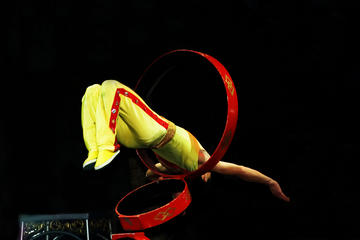 Chaoyang Theatre
Chaoyang Theatre If you’re planning to see a Chinese acrobatics show while in China -- and you should, since the young acrobats here are wildly talented -- Beijing’s Chaoyang Theatre is one of the best places to do so. Young acrobats from across the country perform in the theater, spinning plates,
Chaoyang Theatre
Chaoyang Theatre If you’re planning to see a Chinese acrobatics show while in China -- and you should, since the young acrobats here are wildly talented -- Beijing’s Chaoyang Theatre is one of the best places to do so. Young acrobats from across the country perform in the theater, spinning plates,
-
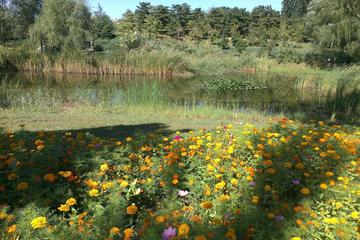 Chaoyang Park
Chaoyang Park Built in 1984 on the site of a former imperial palace, Beijing’s Chaoyang Park is the largest park in the city and a great place to spend a morning or afternoon relaxing or people watching. The 714-acre (289-hectare) space includes 20 designated scenic spots as well as the venue for
Chaoyang Park
Chaoyang Park Built in 1984 on the site of a former imperial palace, Beijing’s Chaoyang Park is the largest park in the city and a great place to spend a morning or afternoon relaxing or people watching. The 714-acre (289-hectare) space includes 20 designated scenic spots as well as the venue for
-
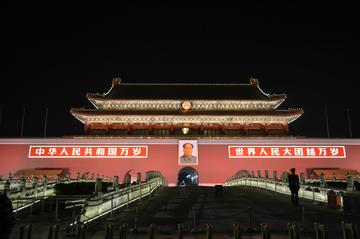 Changan Street
Changan Street Chang’an Street is a major thoroughfare to the north of Tiananmen Square in central Beijing. It stretches from West Changan Street to East Changan Street (although some refer to it as the entire route from the Shijingshan district through to Tongzhou district).This huge, wide street
Changan Street
Changan Street Chang’an Street is a major thoroughfare to the north of Tiananmen Square in central Beijing. It stretches from West Changan Street to East Changan Street (although some refer to it as the entire route from the Shijingshan district through to Tongzhou district).This huge, wide street
-
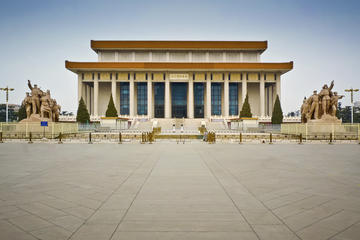 Chairman Mao Memorial Hall (Maozhuxi Jiniantang)
Chairman Mao Memorial Hall (Maozhuxi Jiniantang) The Chairman Mao Memorial Hall houses the remains of one of China’s most influential men, Mao Zedong, who was chairman of the Communist Party from its inception in 1943 until his death in 1973. Located to the east of Tiananmen Square near the Monume
Chairman Mao Memorial Hall (Maozhuxi Jiniantang)
Chairman Mao Memorial Hall (Maozhuxi Jiniantang) The Chairman Mao Memorial Hall houses the remains of one of China’s most influential men, Mao Zedong, who was chairman of the Communist Party from its inception in 1943 until his death in 1973. Located to the east of Tiananmen Square near the Monume
-
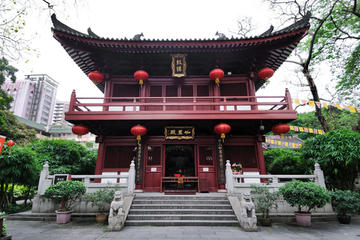 Bright Filial Piety Temple (Guangxiao Si)
Bright Filial Piety Temple (Guangxiao Si) Located near Yuexiu Park, the Bright Filial Piety Temple (Guangxiao Si) is the city’s oldest Buddhist temple. Originally constructed in the fourth century, the temple has been rebuilt numerous times after experiencing fire damage. The main hall of the temp
Bright Filial Piety Temple (Guangxiao Si)
Bright Filial Piety Temple (Guangxiao Si) Located near Yuexiu Park, the Bright Filial Piety Temple (Guangxiao Si) is the city’s oldest Buddhist temple. Originally constructed in the fourth century, the temple has been rebuilt numerous times after experiencing fire damage. The main hall of the temp
-
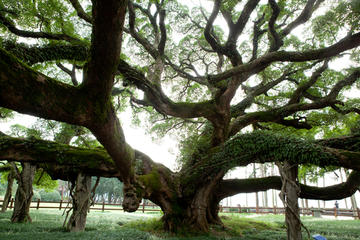 Big Banyan Tree
Big Banyan Tree The Big Banyan Tree, located less than four miles (6.4 kilometers) outside the town of Yangshuo, is a large, well-preserved banyan tree said to have been planted during China’s Jin Dynasty. The 55-foot (16.8-meter) tall tree gained notoriety after a famous scene from the Chinese fi
Big Banyan Tree
Big Banyan Tree The Big Banyan Tree, located less than four miles (6.4 kilometers) outside the town of Yangshuo, is a large, well-preserved banyan tree said to have been planted during China’s Jin Dynasty. The 55-foot (16.8-meter) tall tree gained notoriety after a famous scene from the Chinese fi
-
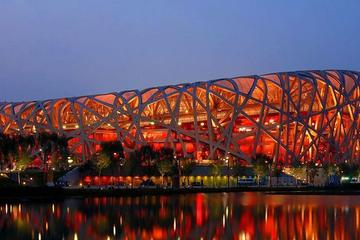 Beijing National Stadium
Beijing National Stadium Niaochao, more commonly referred to as the Beijing National Stadium or the Bird’s Nest, was designed and constructed for the 2008 Beijing Olympic Games and has since become a major landmark in China’s capital. Chinese artist Ai Weiwei consulted on the Swiss-designed projec
Beijing National Stadium
Beijing National Stadium Niaochao, more commonly referred to as the Beijing National Stadium or the Bird’s Nest, was designed and constructed for the 2008 Beijing Olympic Games and has since become a major landmark in China’s capital. Chinese artist Ai Weiwei consulted on the Swiss-designed projec
-
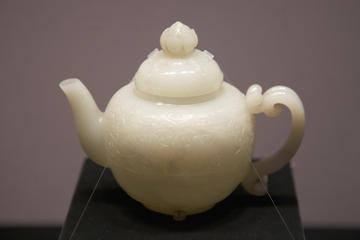 Beijing Capital Museum
Beijing Capital Museum The Beijing Capital Museum, opened in 1981 and moved to its current location in 2006, houses a sizable collection of imperial Chinese art and artifacts, as well as Buddhist relics from several Asian countries. Five aboveground and two basement floors house more than 200,000
Beijing Capital Museum
Beijing Capital Museum The Beijing Capital Museum, opened in 1981 and moved to its current location in 2006, houses a sizable collection of imperial Chinese art and artifacts, as well as Buddhist relics from several Asian countries. Five aboveground and two basement floors house more than 200,000
-
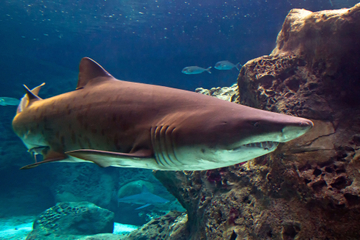 Beijing Aquarium (Beijing Haiyangguan)
Beijing Aquarium (Beijing Haiyangguan) Situated within the Beijing Zoo, the Beijing Aquarium (Beijing Haiyangguan) is the largest inland aquarium in China and home to an impressive range of aquatic animals. The complex houses an Amazon rainforest pavilion where you can see live piranha and 100 oth
Beijing Aquarium (Beijing Haiyangguan)
Beijing Aquarium (Beijing Haiyangguan) Situated within the Beijing Zoo, the Beijing Aquarium (Beijing Haiyangguan) is the largest inland aquarium in China and home to an impressive range of aquatic animals. The complex houses an Amazon rainforest pavilion where you can see live piranha and 100 oth
-
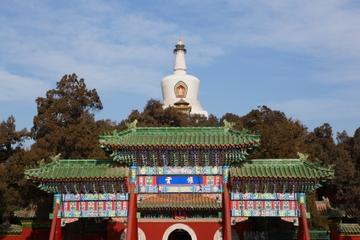 Beihai Park (Beihai Gongyuan)
Beihai Park (Beihai Gongyuan) Before 1911, when the Qing dynasty ended, this park was attached to the Forbidden City. Built in the 10th century, it is one of the most lavish and important Chinese gardens. The landscaping references geological features from all over China. If you miss these subtlet
Beihai Park (Beihai Gongyuan)
Beihai Park (Beihai Gongyuan) Before 1911, when the Qing dynasty ended, this park was attached to the Forbidden City. Built in the 10th century, it is one of the most lavish and important Chinese gardens. The landscaping references geological features from all over China. If you miss these subtlet
-
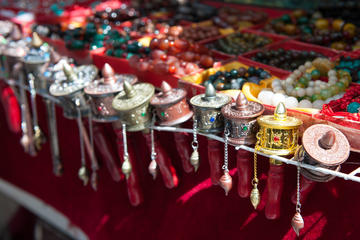 Barkhor Street
Barkhor Street Like a treasure trove or something out of Aladdin’s cave, Barkhor Street is an ancient road that circles the square that houses Jokhang Temple. Most significant as a thoroughfare for pilgrims on their way to the temple, Barkhor Street is also home to the Tromzikhang market, host to
Barkhor Street
Barkhor Street Like a treasure trove or something out of Aladdin’s cave, Barkhor Street is an ancient road that circles the square that houses Jokhang Temple. Most significant as a thoroughfare for pilgrims on their way to the temple, Barkhor Street is also home to the Tromzikhang market, host to
-
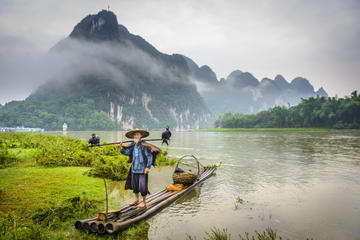 Baisha Ancient Town
Baisha Ancient Town Baisha Ancient Town is well known in the area for being the town of fruits, due to farming so many cumquats and exporting them throughout China. This tiny, oval-shaped Asian citrus fruit closely resemble oranges and throughout the year, the village turns from a sea of green in
Baisha Ancient Town
Baisha Ancient Town Baisha Ancient Town is well known in the area for being the town of fruits, due to farming so many cumquats and exporting them throughout China. This tiny, oval-shaped Asian citrus fruit closely resemble oranges and throughout the year, the village turns from a sea of green in
-
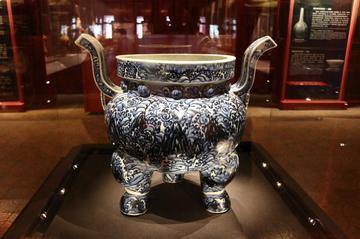 Antiquarium of The Palace Museum
Antiquarium of The Palace Museum While the entire Forbidden City operates under the name “Palace Museum,” its treasures, artifacts and memorabilia are all housed within the Antiquarium. The museum is divided into galleries based on art form, including pottery, bronze, treasures, painting, clocks,
Antiquarium of The Palace Museum
Antiquarium of The Palace Museum While the entire Forbidden City operates under the name “Palace Museum,” its treasures, artifacts and memorabilia are all housed within the Antiquarium. The museum is divided into galleries based on art form, including pottery, bronze, treasures, painting, clocks,
-
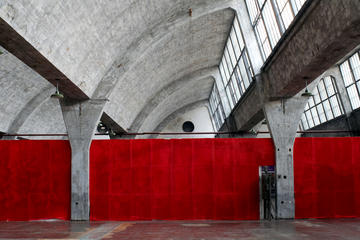 798 Art Zone
798 Art Zone Located in northwest Beijing, 798 Art Zone occupies a decommissioned military factory from the 1950s that now houses an edgy artistic community. The Communist-era factories and warehouses of the complex have all been converted into galleries, studios, boutique shops and cafes whose mo
798 Art Zone
798 Art Zone Located in northwest Beijing, 798 Art Zone occupies a decommissioned military factory from the 1950s that now houses an edgy artistic community. The Communist-era factories and warehouses of the complex have all been converted into galleries, studios, boutique shops and cafes whose mo
-
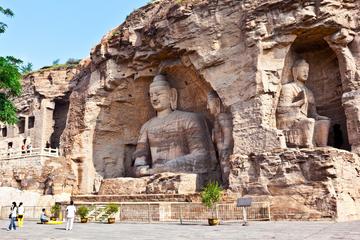 Yungang Grottoes
Yungang Grottoes The Yungang Grottoes are ancient Chinese Buddhist grottoes that reside in the north cliff of Wuzhou Mountain near the city of Datong in Shanxi Province. Listed as a World Heritage Site in 2001, the Yungang Grottoes are a brilliant display of Buddhist rock-cut architecture dating b
Yungang Grottoes
Yungang Grottoes The Yungang Grottoes are ancient Chinese Buddhist grottoes that reside in the north cliff of Wuzhou Mountain near the city of Datong in Shanxi Province. Listed as a World Heritage Site in 2001, the Yungang Grottoes are a brilliant display of Buddhist rock-cut architecture dating b
-
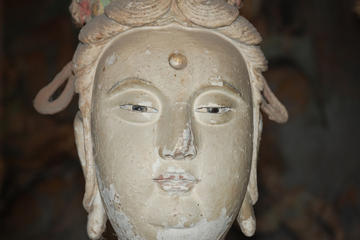 Shuanglin Temple
Shuanglin Temple Located in southern Pingyao County, Shuanglin Temple is famous for the 2,000 painted clay sculptures dating back to the Song, Yuan, Ming and Qing Dynasties of China. The temple was originally founded in the late sixth century, but the current structures were built during the Ming
Shuanglin Temple
Shuanglin Temple Located in southern Pingyao County, Shuanglin Temple is famous for the 2,000 painted clay sculptures dating back to the Song, Yuan, Ming and Qing Dynasties of China. The temple was originally founded in the late sixth century, but the current structures were built during the Ming
-
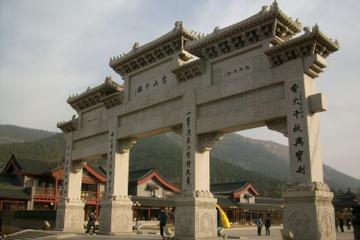 Shaolin Temple
Shaolin Temple Set at the base of Shaoshi Mountain, nine miles (15 kilometers) west of Dengfeng, lies the Shaolin Temple, famous not for its Buddhist history but for its martial arts. The original monastery was built in 495 during the Northern Wei Dynasty as a place for meditation. According to te
Shaolin Temple
Shaolin Temple Set at the base of Shaoshi Mountain, nine miles (15 kilometers) west of Dengfeng, lies the Shaolin Temple, famous not for its Buddhist history but for its martial arts. The original monastery was built in 495 during the Northern Wei Dynasty as a place for meditation. According to te
-
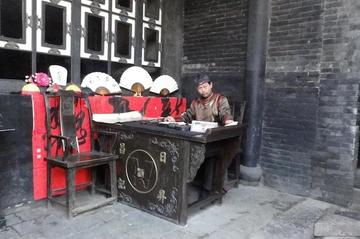 Rishengchang Exchange
Rishengchang Exchange Situated in Pingyao, Shanxi Province, the Rishengchang Exchange is widely considered to have been the first bank in China. Established in 1823 during the Qing Dynasty, what began as one man’s efforts to manage the accounts of his own company developed into a private banking e
Rishengchang Exchange
Rishengchang Exchange Situated in Pingyao, Shanxi Province, the Rishengchang Exchange is widely considered to have been the first bank in China. Established in 1823 during the Qing Dynasty, what began as one man’s efforts to manage the accounts of his own company developed into a private banking e
-
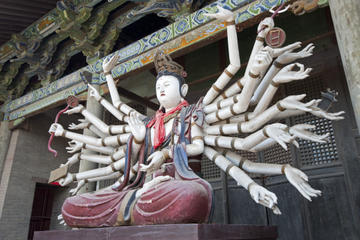 Pingyao
Pingyao The old town of Pingyao, a UNESCO World Heritage site in Shanxi Province, is often considered the best preserved ancient walled city in China. Founded in the 14th century, the old portion of the city covers 556 acres (225 hectares) that retain many of the features of a traditional Han city
Pingyao
Pingyao The old town of Pingyao, a UNESCO World Heritage site in Shanxi Province, is often considered the best preserved ancient walled city in China. Founded in the 14th century, the old portion of the city covers 556 acres (225 hectares) that retain many of the features of a traditional Han city
-
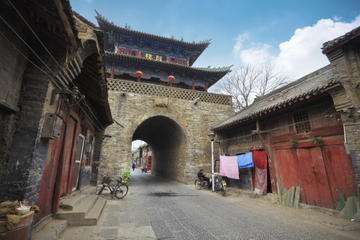 Luoyang
Luoyang Luoyang, located in Henan Province in East Central China, served as the capital of the 13 dynasties until the 10th century, when it was relocated to Kaifeng. At its height, the city contained some 1,300 Buddhist temples and a massive Sui-dynasty palace complex. Today, Luoyang resembles man
Luoyang
Luoyang Luoyang, located in Henan Province in East Central China, served as the capital of the 13 dynasties until the 10th century, when it was relocated to Kaifeng. At its height, the city contained some 1,300 Buddhist temples and a massive Sui-dynasty palace complex. Today, Luoyang resembles man
Total
2381 -travel
FirstPage PreviousPage NextPage LastPage CurrentPage:
7/120 20-travel/Page GoTo Page:
 Chaoyang Theatre
Chaoyang Theatre If you’re planning to see a Chinese acrobatics show while in China -- and you should, since the young acrobats here are wildly talented -- Beijing’s Chaoyang Theatre is one of the best places to do so. Young acrobats from across the country perform in the theater, spinning plates,
Chaoyang Theatre
Chaoyang Theatre If you’re planning to see a Chinese acrobatics show while in China -- and you should, since the young acrobats here are wildly talented -- Beijing’s Chaoyang Theatre is one of the best places to do so. Young acrobats from across the country perform in the theater, spinning plates,
 Chaoyang Park
Chaoyang Park Built in 1984 on the site of a former imperial palace, Beijing’s Chaoyang Park is the largest park in the city and a great place to spend a morning or afternoon relaxing or people watching. The 714-acre (289-hectare) space includes 20 designated scenic spots as well as the venue for
Chaoyang Park
Chaoyang Park Built in 1984 on the site of a former imperial palace, Beijing’s Chaoyang Park is the largest park in the city and a great place to spend a morning or afternoon relaxing or people watching. The 714-acre (289-hectare) space includes 20 designated scenic spots as well as the venue for
 Changan Street
Changan Street Chang’an Street is a major thoroughfare to the north of Tiananmen Square in central Beijing. It stretches from West Changan Street to East Changan Street (although some refer to it as the entire route from the Shijingshan district through to Tongzhou district).This huge, wide street
Changan Street
Changan Street Chang’an Street is a major thoroughfare to the north of Tiananmen Square in central Beijing. It stretches from West Changan Street to East Changan Street (although some refer to it as the entire route from the Shijingshan district through to Tongzhou district).This huge, wide street
 Chairman Mao Memorial Hall (Maozhuxi Jiniantang)
Chairman Mao Memorial Hall (Maozhuxi Jiniantang) The Chairman Mao Memorial Hall houses the remains of one of China’s most influential men, Mao Zedong, who was chairman of the Communist Party from its inception in 1943 until his death in 1973. Located to the east of Tiananmen Square near the Monume
Chairman Mao Memorial Hall (Maozhuxi Jiniantang)
Chairman Mao Memorial Hall (Maozhuxi Jiniantang) The Chairman Mao Memorial Hall houses the remains of one of China’s most influential men, Mao Zedong, who was chairman of the Communist Party from its inception in 1943 until his death in 1973. Located to the east of Tiananmen Square near the Monume
 Bright Filial Piety Temple (Guangxiao Si)
Bright Filial Piety Temple (Guangxiao Si) Located near Yuexiu Park, the Bright Filial Piety Temple (Guangxiao Si) is the city’s oldest Buddhist temple. Originally constructed in the fourth century, the temple has been rebuilt numerous times after experiencing fire damage. The main hall of the temp
Bright Filial Piety Temple (Guangxiao Si)
Bright Filial Piety Temple (Guangxiao Si) Located near Yuexiu Park, the Bright Filial Piety Temple (Guangxiao Si) is the city’s oldest Buddhist temple. Originally constructed in the fourth century, the temple has been rebuilt numerous times after experiencing fire damage. The main hall of the temp
 Big Banyan Tree
Big Banyan Tree The Big Banyan Tree, located less than four miles (6.4 kilometers) outside the town of Yangshuo, is a large, well-preserved banyan tree said to have been planted during China’s Jin Dynasty. The 55-foot (16.8-meter) tall tree gained notoriety after a famous scene from the Chinese fi
Big Banyan Tree
Big Banyan Tree The Big Banyan Tree, located less than four miles (6.4 kilometers) outside the town of Yangshuo, is a large, well-preserved banyan tree said to have been planted during China’s Jin Dynasty. The 55-foot (16.8-meter) tall tree gained notoriety after a famous scene from the Chinese fi
 Beijing National Stadium
Beijing National Stadium Niaochao, more commonly referred to as the Beijing National Stadium or the Bird’s Nest, was designed and constructed for the 2008 Beijing Olympic Games and has since become a major landmark in China’s capital. Chinese artist Ai Weiwei consulted on the Swiss-designed projec
Beijing National Stadium
Beijing National Stadium Niaochao, more commonly referred to as the Beijing National Stadium or the Bird’s Nest, was designed and constructed for the 2008 Beijing Olympic Games and has since become a major landmark in China’s capital. Chinese artist Ai Weiwei consulted on the Swiss-designed projec
 Beijing Capital Museum
Beijing Capital Museum The Beijing Capital Museum, opened in 1981 and moved to its current location in 2006, houses a sizable collection of imperial Chinese art and artifacts, as well as Buddhist relics from several Asian countries. Five aboveground and two basement floors house more than 200,000
Beijing Capital Museum
Beijing Capital Museum The Beijing Capital Museum, opened in 1981 and moved to its current location in 2006, houses a sizable collection of imperial Chinese art and artifacts, as well as Buddhist relics from several Asian countries. Five aboveground and two basement floors house more than 200,000
 Beijing Aquarium (Beijing Haiyangguan)
Beijing Aquarium (Beijing Haiyangguan) Situated within the Beijing Zoo, the Beijing Aquarium (Beijing Haiyangguan) is the largest inland aquarium in China and home to an impressive range of aquatic animals. The complex houses an Amazon rainforest pavilion where you can see live piranha and 100 oth
Beijing Aquarium (Beijing Haiyangguan)
Beijing Aquarium (Beijing Haiyangguan) Situated within the Beijing Zoo, the Beijing Aquarium (Beijing Haiyangguan) is the largest inland aquarium in China and home to an impressive range of aquatic animals. The complex houses an Amazon rainforest pavilion where you can see live piranha and 100 oth
 Beihai Park (Beihai Gongyuan)
Beihai Park (Beihai Gongyuan) Before 1911, when the Qing dynasty ended, this park was attached to the Forbidden City. Built in the 10th century, it is one of the most lavish and important Chinese gardens. The landscaping references geological features from all over China. If you miss these subtlet
Beihai Park (Beihai Gongyuan)
Beihai Park (Beihai Gongyuan) Before 1911, when the Qing dynasty ended, this park was attached to the Forbidden City. Built in the 10th century, it is one of the most lavish and important Chinese gardens. The landscaping references geological features from all over China. If you miss these subtlet
 Barkhor Street
Barkhor Street Like a treasure trove or something out of Aladdin’s cave, Barkhor Street is an ancient road that circles the square that houses Jokhang Temple. Most significant as a thoroughfare for pilgrims on their way to the temple, Barkhor Street is also home to the Tromzikhang market, host to
Barkhor Street
Barkhor Street Like a treasure trove or something out of Aladdin’s cave, Barkhor Street is an ancient road that circles the square that houses Jokhang Temple. Most significant as a thoroughfare for pilgrims on their way to the temple, Barkhor Street is also home to the Tromzikhang market, host to
 Baisha Ancient Town
Baisha Ancient Town Baisha Ancient Town is well known in the area for being the town of fruits, due to farming so many cumquats and exporting them throughout China. This tiny, oval-shaped Asian citrus fruit closely resemble oranges and throughout the year, the village turns from a sea of green in
Baisha Ancient Town
Baisha Ancient Town Baisha Ancient Town is well known in the area for being the town of fruits, due to farming so many cumquats and exporting them throughout China. This tiny, oval-shaped Asian citrus fruit closely resemble oranges and throughout the year, the village turns from a sea of green in
 Antiquarium of The Palace Museum
Antiquarium of The Palace Museum While the entire Forbidden City operates under the name “Palace Museum,” its treasures, artifacts and memorabilia are all housed within the Antiquarium. The museum is divided into galleries based on art form, including pottery, bronze, treasures, painting, clocks,
Antiquarium of The Palace Museum
Antiquarium of The Palace Museum While the entire Forbidden City operates under the name “Palace Museum,” its treasures, artifacts and memorabilia are all housed within the Antiquarium. The museum is divided into galleries based on art form, including pottery, bronze, treasures, painting, clocks,
 798 Art Zone
798 Art Zone Located in northwest Beijing, 798 Art Zone occupies a decommissioned military factory from the 1950s that now houses an edgy artistic community. The Communist-era factories and warehouses of the complex have all been converted into galleries, studios, boutique shops and cafes whose mo
798 Art Zone
798 Art Zone Located in northwest Beijing, 798 Art Zone occupies a decommissioned military factory from the 1950s that now houses an edgy artistic community. The Communist-era factories and warehouses of the complex have all been converted into galleries, studios, boutique shops and cafes whose mo
 Yungang Grottoes
Yungang Grottoes The Yungang Grottoes are ancient Chinese Buddhist grottoes that reside in the north cliff of Wuzhou Mountain near the city of Datong in Shanxi Province. Listed as a World Heritage Site in 2001, the Yungang Grottoes are a brilliant display of Buddhist rock-cut architecture dating b
Yungang Grottoes
Yungang Grottoes The Yungang Grottoes are ancient Chinese Buddhist grottoes that reside in the north cliff of Wuzhou Mountain near the city of Datong in Shanxi Province. Listed as a World Heritage Site in 2001, the Yungang Grottoes are a brilliant display of Buddhist rock-cut architecture dating b
 Shuanglin Temple
Shuanglin Temple Located in southern Pingyao County, Shuanglin Temple is famous for the 2,000 painted clay sculptures dating back to the Song, Yuan, Ming and Qing Dynasties of China. The temple was originally founded in the late sixth century, but the current structures were built during the Ming
Shuanglin Temple
Shuanglin Temple Located in southern Pingyao County, Shuanglin Temple is famous for the 2,000 painted clay sculptures dating back to the Song, Yuan, Ming and Qing Dynasties of China. The temple was originally founded in the late sixth century, but the current structures were built during the Ming
 Shaolin Temple
Shaolin Temple Set at the base of Shaoshi Mountain, nine miles (15 kilometers) west of Dengfeng, lies the Shaolin Temple, famous not for its Buddhist history but for its martial arts. The original monastery was built in 495 during the Northern Wei Dynasty as a place for meditation. According to te
Shaolin Temple
Shaolin Temple Set at the base of Shaoshi Mountain, nine miles (15 kilometers) west of Dengfeng, lies the Shaolin Temple, famous not for its Buddhist history but for its martial arts. The original monastery was built in 495 during the Northern Wei Dynasty as a place for meditation. According to te
 Rishengchang Exchange
Rishengchang Exchange Situated in Pingyao, Shanxi Province, the Rishengchang Exchange is widely considered to have been the first bank in China. Established in 1823 during the Qing Dynasty, what began as one man’s efforts to manage the accounts of his own company developed into a private banking e
Rishengchang Exchange
Rishengchang Exchange Situated in Pingyao, Shanxi Province, the Rishengchang Exchange is widely considered to have been the first bank in China. Established in 1823 during the Qing Dynasty, what began as one man’s efforts to manage the accounts of his own company developed into a private banking e
 Pingyao
Pingyao The old town of Pingyao, a UNESCO World Heritage site in Shanxi Province, is often considered the best preserved ancient walled city in China. Founded in the 14th century, the old portion of the city covers 556 acres (225 hectares) that retain many of the features of a traditional Han city
Pingyao
Pingyao The old town of Pingyao, a UNESCO World Heritage site in Shanxi Province, is often considered the best preserved ancient walled city in China. Founded in the 14th century, the old portion of the city covers 556 acres (225 hectares) that retain many of the features of a traditional Han city
 Luoyang
Luoyang Luoyang, located in Henan Province in East Central China, served as the capital of the 13 dynasties until the 10th century, when it was relocated to Kaifeng. At its height, the city contained some 1,300 Buddhist temples and a massive Sui-dynasty palace complex. Today, Luoyang resembles man
Luoyang
Luoyang Luoyang, located in Henan Province in East Central China, served as the capital of the 13 dynasties until the 10th century, when it was relocated to Kaifeng. At its height, the city contained some 1,300 Buddhist temples and a massive Sui-dynasty palace complex. Today, Luoyang resembles man